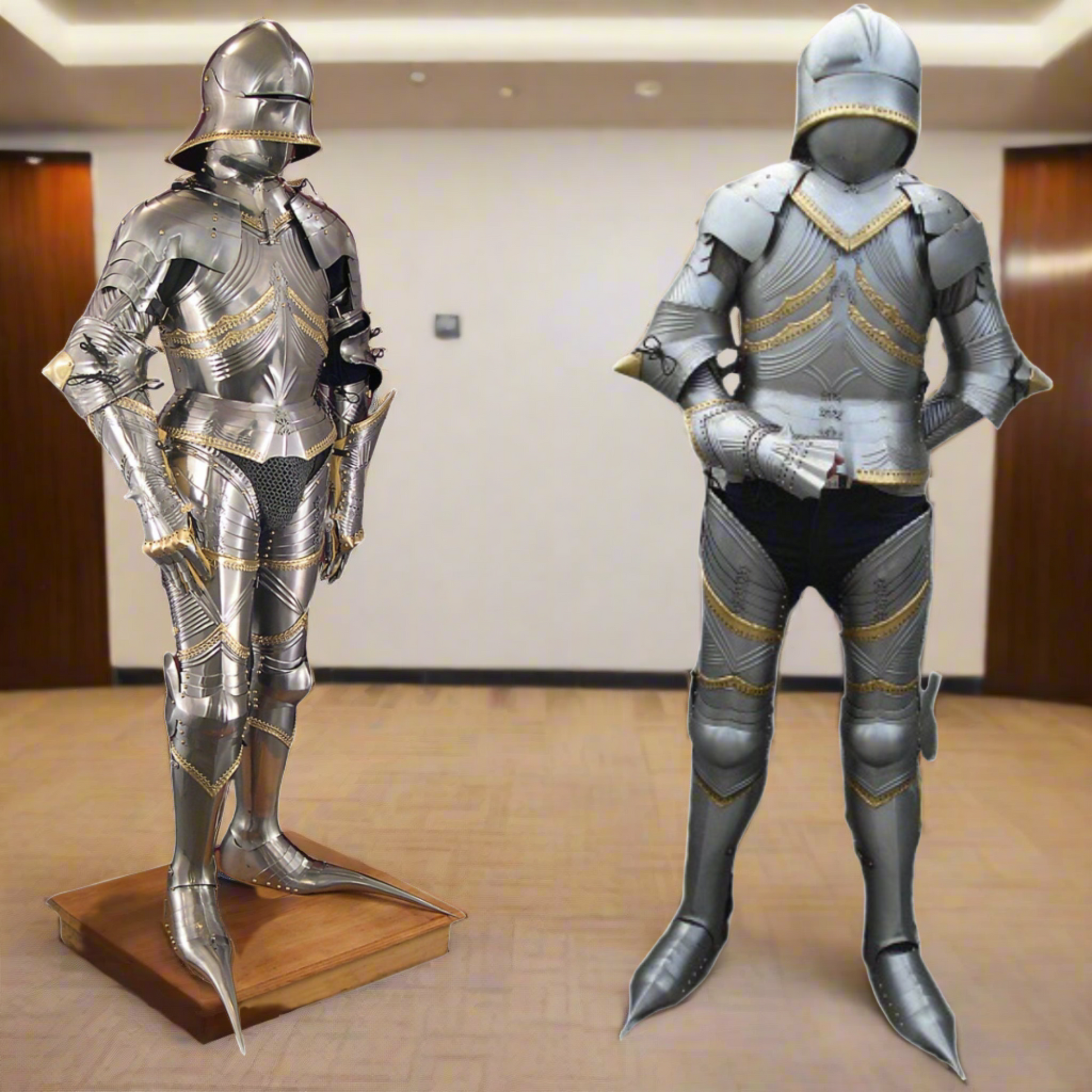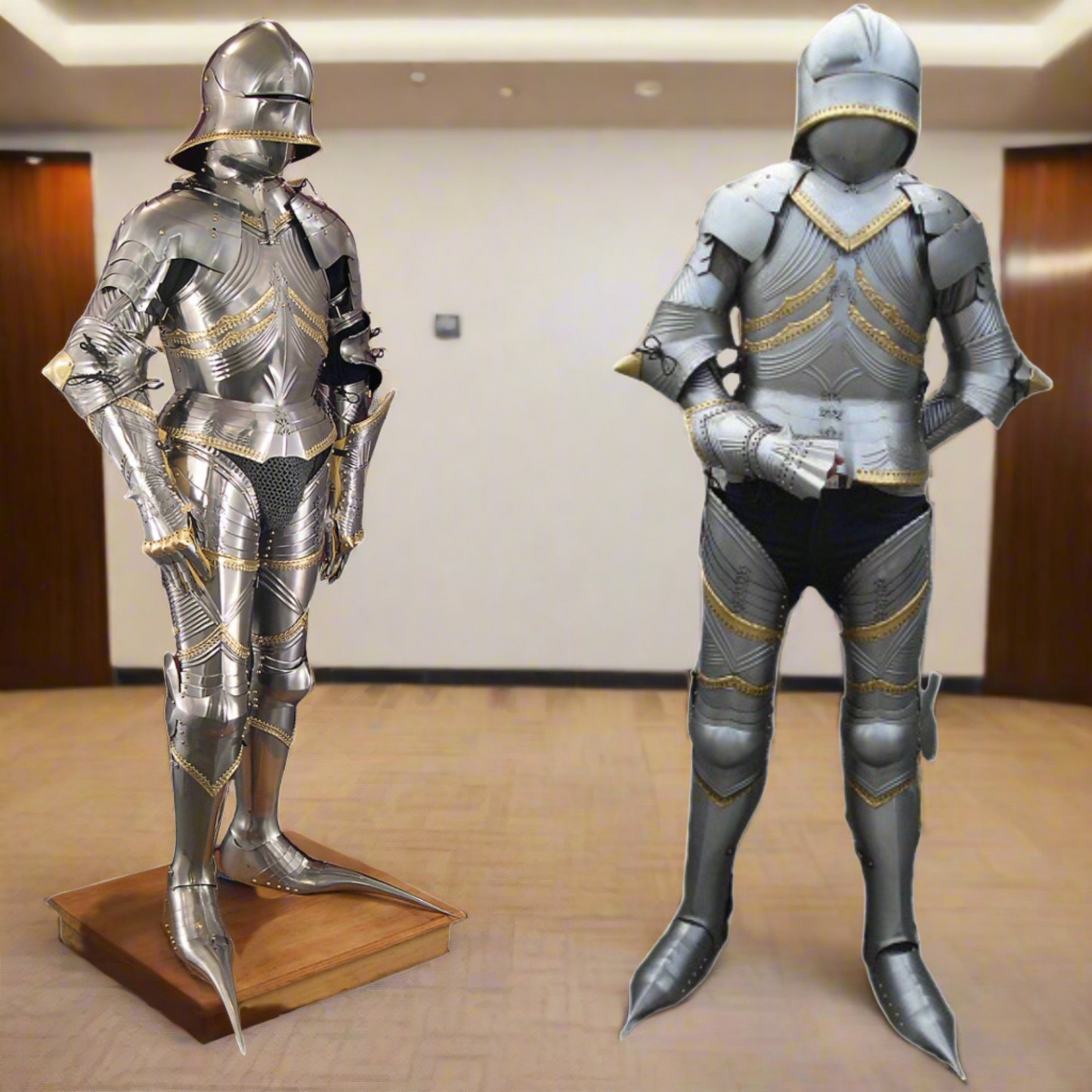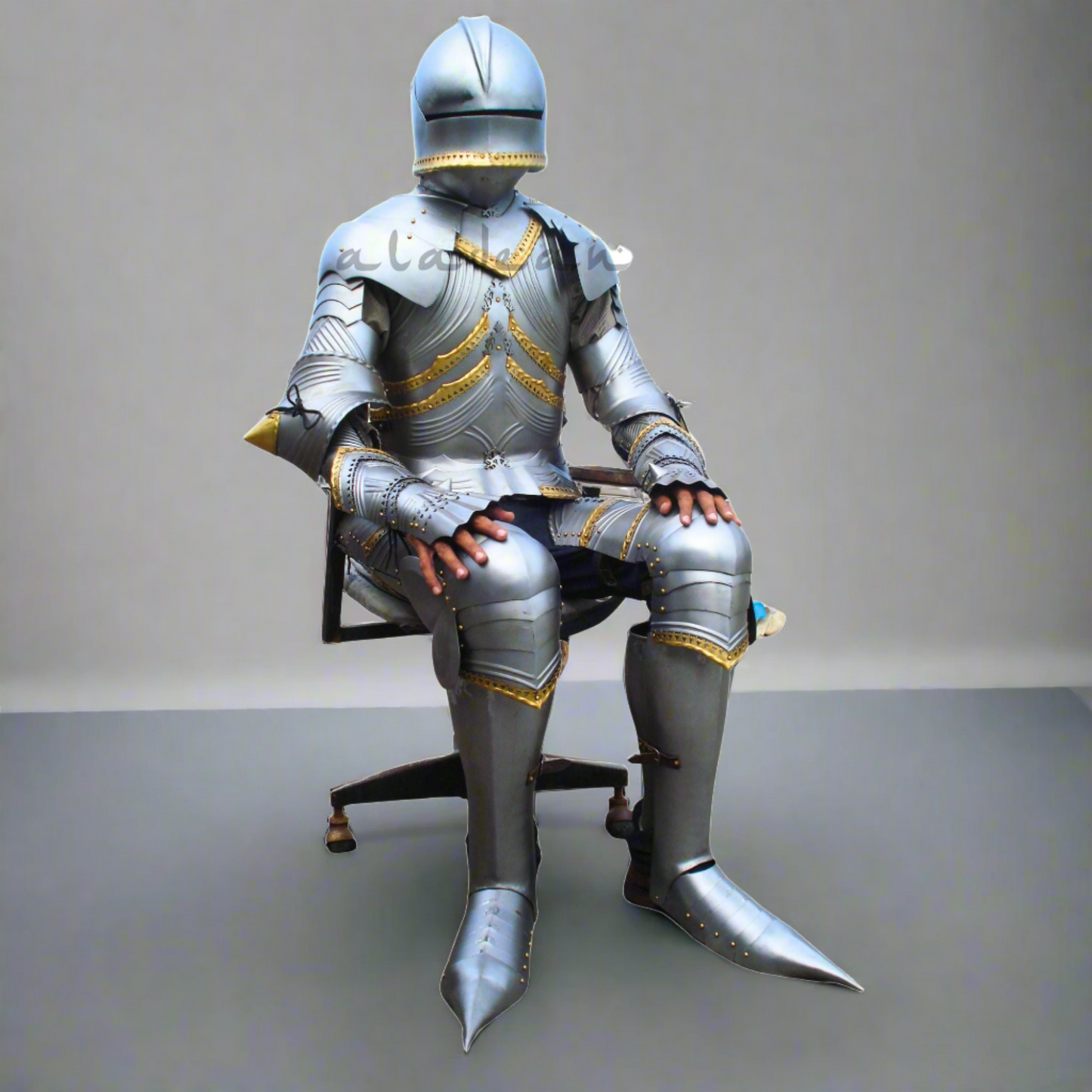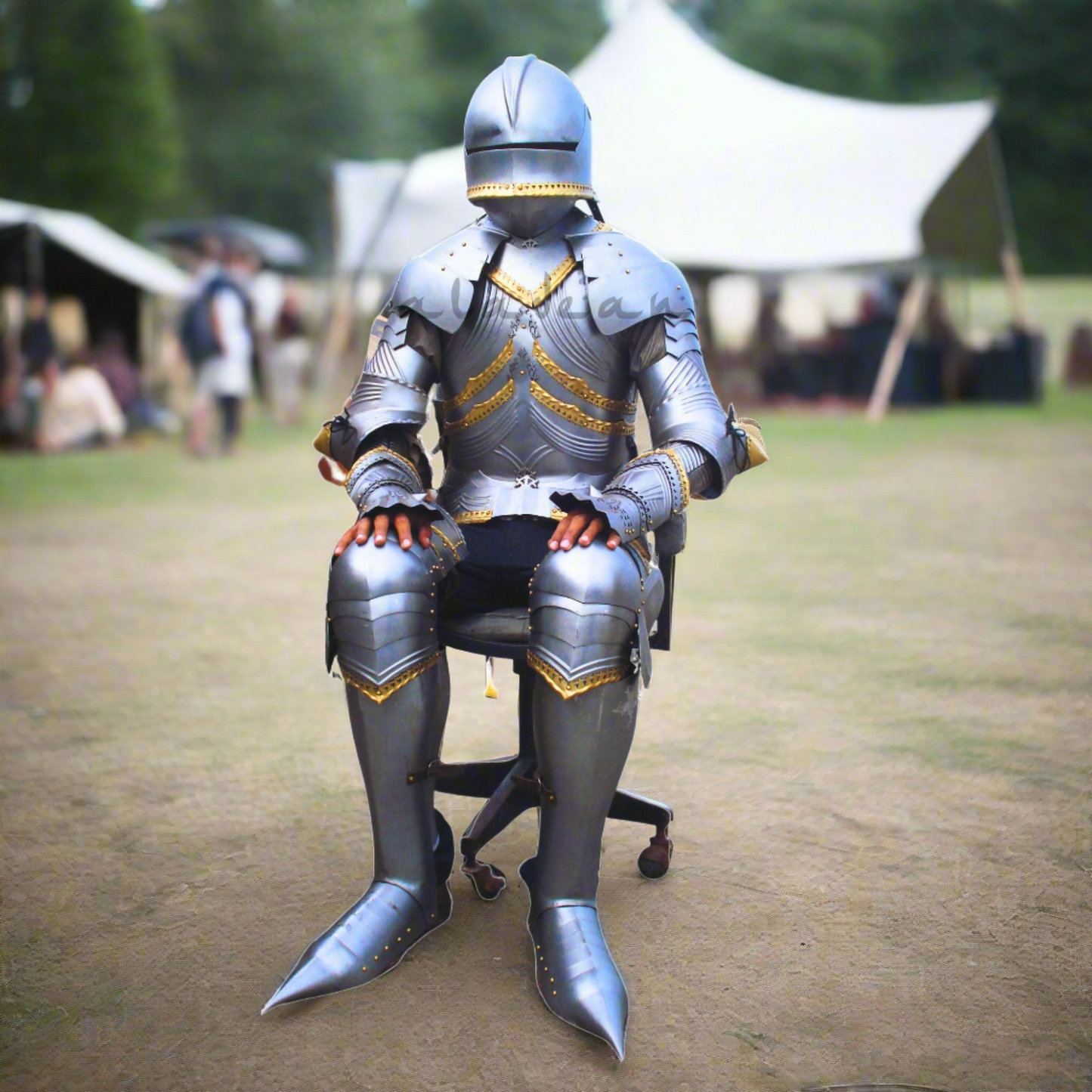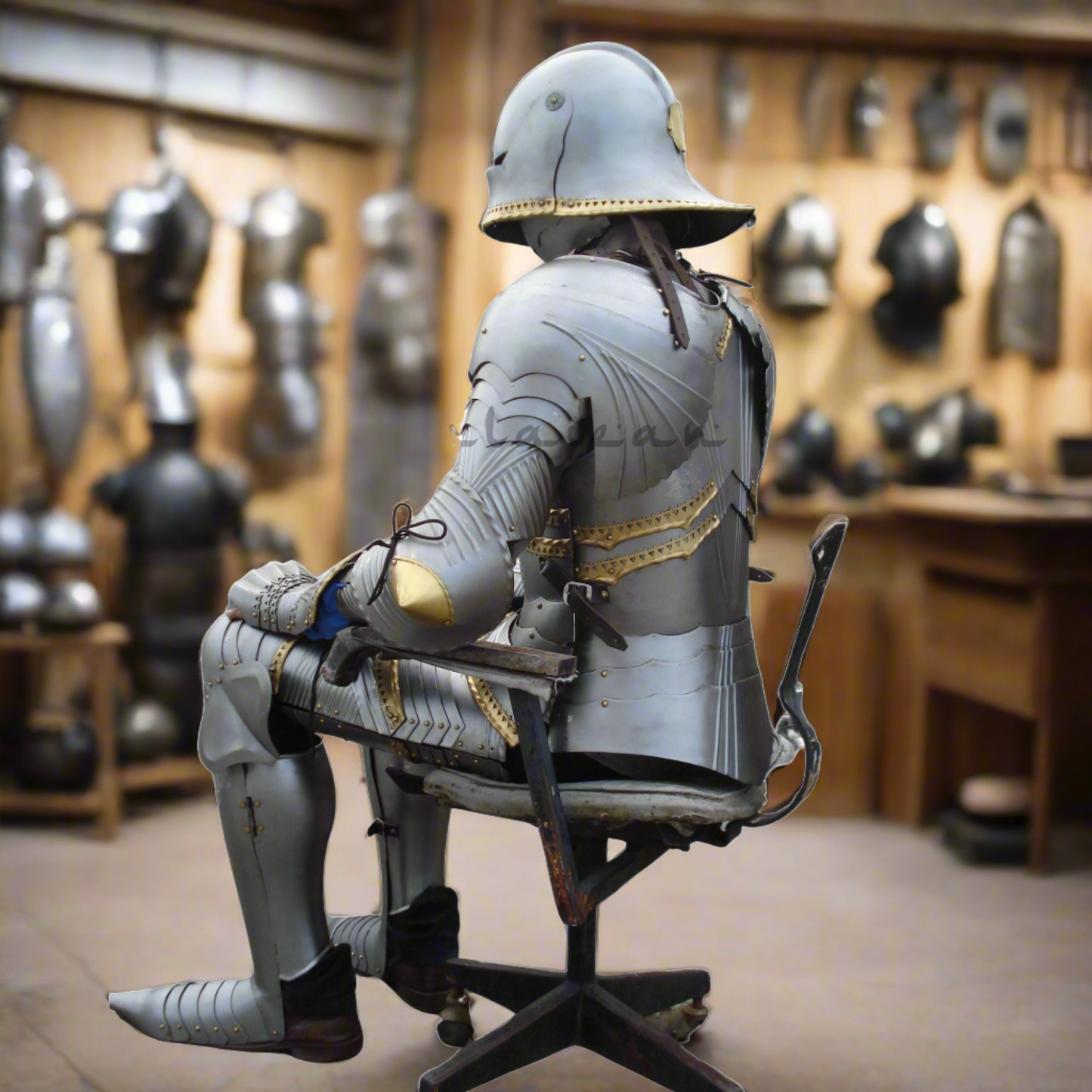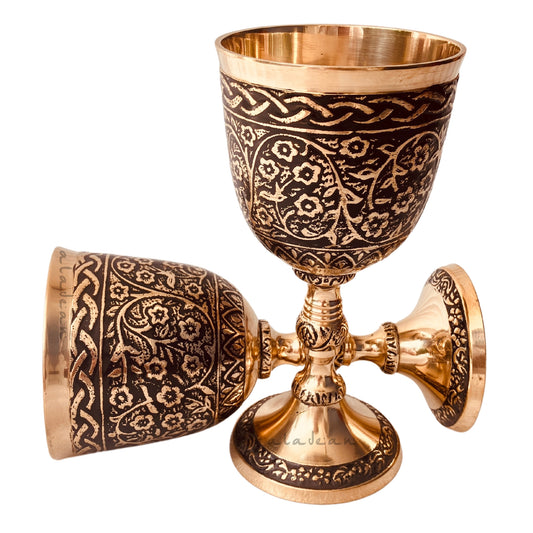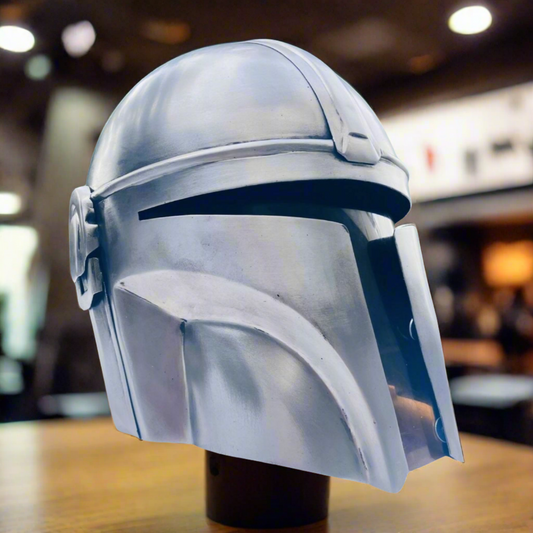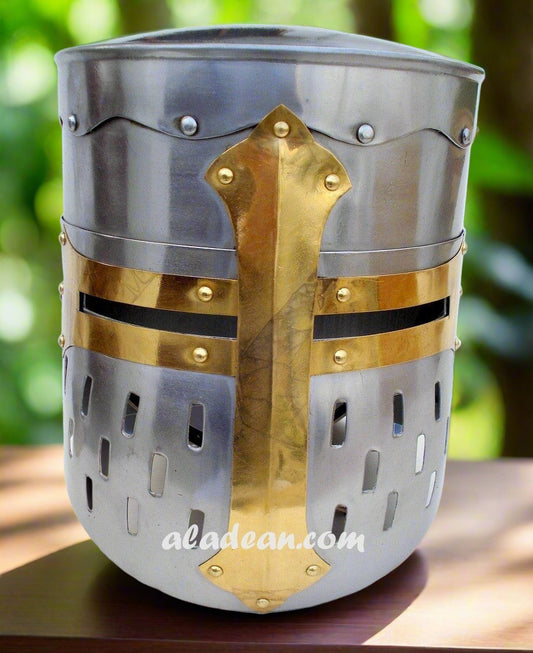The Evolution of Medieval Armor: From Chainmail to Full Plate
Share
Medieval armor is a fascinating subject that reflects the technological advancements and cultural shifts of the time. From the early days of chainmail to the sophisticated full plate armor, the evolution of medieval armor is a testament to the ingenuity and adaptability of medieval craftsmen and warriors. This blog will explore the various stages of armor development, highlighting key features and historical contexts.
Chainmail: The Foundation of Medieval Armor
-
Origins and Early Use:
- Chainmail, also known as mail or maille, originated around the 3rd century BC and was used by the Celts. It gained widespread use in Europe during the Early Middle Ages. Made from interlinked metal rings, chainmail offered flexibility and protection against slashing attacks.
-
Advantages and Limitations:
- Chainmail was effective against cuts and slashes but less effective against blunt force trauma and piercing weapons like arrows and crossbow bolts. Its flexibility allowed for ease of movement but provided limited protection against heavy impacts.
-
Historical Examples:
- Roman soldiers wore a type of chainmail called lorica hamata. The Vikings also utilized chainmail in their hauberks, which covered the torso and sometimes the arms and legs.
Transition to Plate Armor: The Hybrid Phase
-
Introduction of Plate Elements:
- By the 13th century, as weaponry advanced, knights began to supplement their chainmail with plate elements. These early plate armors included vambraces (for the arms), greaves (for the legs), and cuisses (for the thighs), offering added protection to vulnerable areas.
-
Influence of Warfare:
- The changing nature of warfare, with the increased use of crossbows and longbows, necessitated better protection. The Battle of Crécy in 1346 highlighted the effectiveness of longbowmen against chainmail-clad knights, pushing the development of more comprehensive armor solutions.
The Rise of Full Plate Armor: 14th to 16th Century
-
Development and Features:
- By the late 14th century, full plate armor began to emerge. This type of armor covered the entire body with interconnected plates, providing superior protection. Key components included the helmet (such as the bascinet), breastplate, gauntlets, and greaves.
-
Technological Advances:
- Advances in metallurgy and blacksmithing allowed for the creation of high-quality steel plate armor. Articulated joints, such as those found in the elbow and knee, improved mobility while maintaining protection.
-
Peak and Decline:
- Plate armor reached its zenith in the late 15th and early 16th centuries. However, the advent of gunpowder and firearms gradually made traditional armor obsolete, as even the best plate armor could not withstand gunshots.
Regional Variations and Styles
-
European Differences:
- Armor styles varied across Europe. Italian armor, such as the Milanese, was known for its elegance and craftsmanship. German Gothic armor featured distinctive fluting and elaborate designs, providing both aesthetic appeal and structural strength.
-
Influence of Fashion and Status:
- Armor became a status symbol, often elaborately decorated with etchings, engravings, and even gilding. Knights and nobles used armor to display their wealth and rank, commissioning custom pieces that combined functionality with artistry.
The evolution of medieval armor from chainmail to full plate is a journey through history, reflecting the changing needs of warriors and the advancements in technology and craftsmanship. Each phase of armor development offers a glimpse into the dynamic nature of medieval warfare and society.
If you are passionate about medieval history and armor, explore our collection of authentic reproductions and custom-made pieces. Our armor combines historical accuracy with exceptional craftsmanship, perfect for collectors, reenactors, and history enthusiasts.

